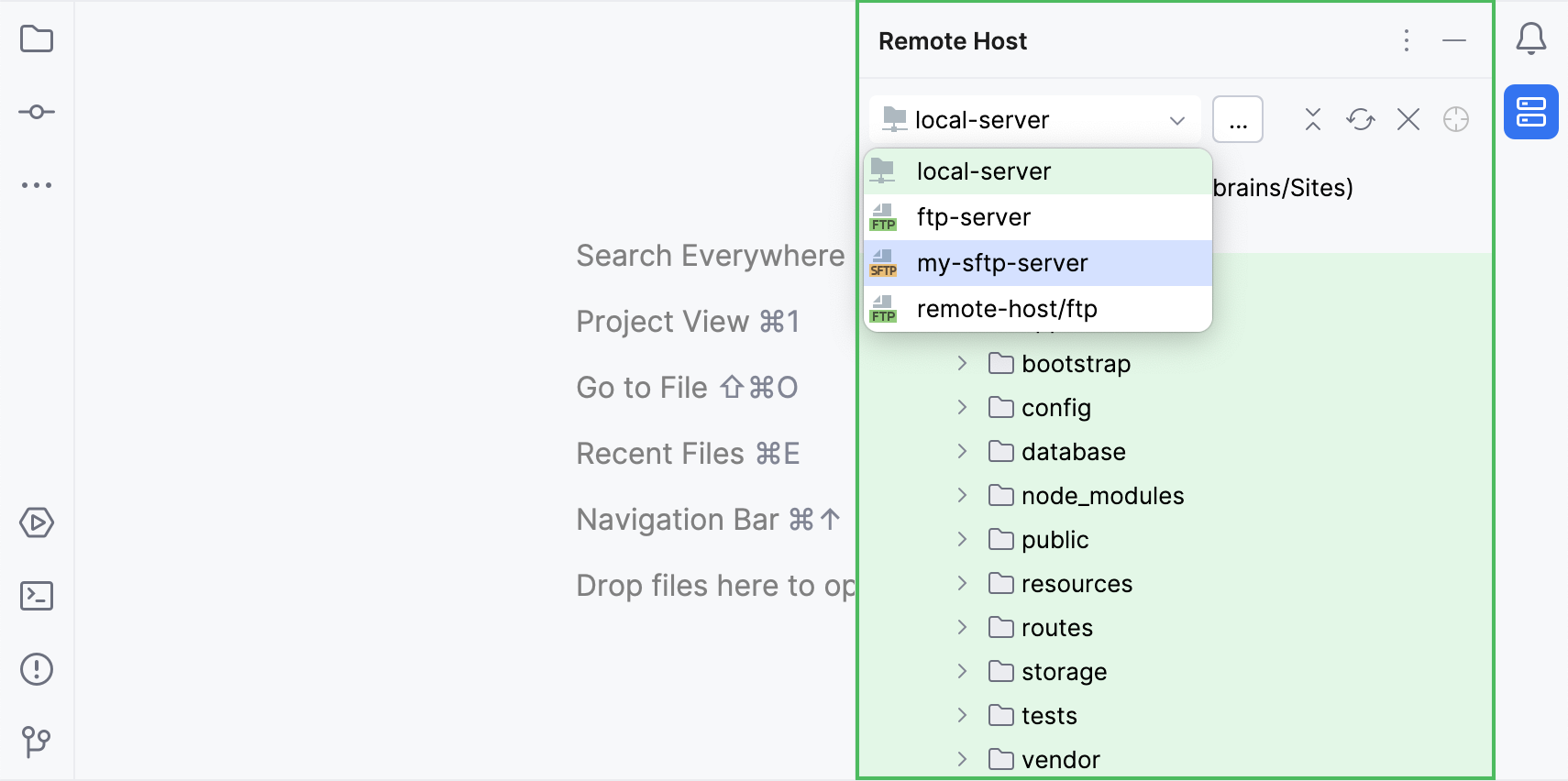Create an in-place server configuration
File | Settings | Build, Execution, Deployment | Deployment for Windows and Linux
IntelliJ IDEA | Settings | Build, Execution, Deployment | Deployment for macOS
In an in-place server configuration, you are using a local web server, but unlike with the local server configuration, don't upload/download or synchronize files between the IntelliJ IDEA project and the project folder in the server file structure. Instead, you open the project folder from the server document root directly in IntelliJ IDEA, and thus do the development on the server directly.
To create an in-place server configuration in IntelliJ IDEA, you only need to specify the web server URL mapped to the server document root and the URL path to your project.
This functionality relies on the FTP/SFTP/WebDAV Connectivity plugin, which is bundled and enabled in IntelliJ IDEA by default. If the relevant features are not available, make sure that you did not disable the plugin.
note
The FTP/SFTP/WebDAV Connectivity plugin is not available in IntelliJ IDEA Community Edition.
Press CtrlAlt0S to open settings and then select Plugins.
Open the Installed tab, find the FTP/SFTP/WebDAV Connectivity plugin, and select the checkbox next to the plugin name.
Press CtrlAlt0S to open settings and then select Build, Execution, Deployment | Deployment.
Alternatively, go to Tools | Deployment | Configuration in the main menu.
In the left-hand pane that lists all the existing server configurations, click Add
and select In place in the popup menu.

In the Create new server dialog that opens, type the name of the server to create and click OK. The Create new server dialog closes and you return to the Connection tab of the Deployment node.
Click
on the toolbar to mark the server as default.
Clear the Visible only for this project checkbox to enable reuse of this server access configuration in other projects.
tip
The server configuration settings are stored in the .idea directory together with the project, which allows sharing them between team members through a VCS.
In the Connection tab (CtrlAlt0S | Build, Execution, Deployment | Deployment), specify:
Web server URL: the URL address (hostname and (optionally) port) mapped to the server document root in the server configuration file. This is the base URL for your application's web address. Both HTTP and HTTPS are supported.
note
Examples:
http://localhost:80http://localhost:80/MySite1(if you choose to establish a more complicated folder structure under the server document root and use only one of the subfolders in the current configuration)
Click
Browse in the right-hand corner of the field to open and check the provided web server URL.
In the Mappings tab (CtrlAlt0S | Build, Execution, Deployment | Deployment), specify:

Local path: the absolute path to the local project folder. IntelliJ IDEA automatically fills out this field with the path to the currently opened project.
Web path: the URL path to the project folder specified in Local path. In most cases, it's the same as the folder name provided in the Local path field.
tip
IntelliJ IDEA appends Web path to the Web server URL specified in the Connection tab.
note
Example:
Local path:
Users/John.Smith/demo-projectWeb path:
/demo-project
Now that you have the server configuration added, you can access the server's files and folders in the Remote Host tool window. Go to Tools | Deployment | Browse Remote Host in the main menu, and in the tool window that opens, select the configured server from the drop-down list.

Thanks for your feedback!